
Food in Crete

A Guide to Cretan FoodBy Diana Farr Louis Like Matt, I used to think Western Crete with Chania was the most interesting and most beautiful part of the island but after I delved deeper in pursuit of recipes for my cookbook, I discovered I really loved just about all of Crete. It simply depended on where I happened to be at the time – reminding me of a Greek wine writer who, when I asked which was his favorite wine, replied, “the one I’m drinking at the moment.” Each corner of Crete has something to offer – with the exception of the tourist ghettos at Hersonisos and other places Matt has singled out for scorn – and the island is large enough so that specialties in one district may be unknown or at least unfindable in another. Sometimes, to be perverse, the same thing is known under a different name, so that anthotyro and myzithra, for example – two similar fresh cheeses – have reverse identities in eastern and western Crete. |
|
|
|
Let’s start with some of the treats featured at tavernas everywhere. One of my favorite starters is dakos – chopped tomato (and Cretan tomatoes will remind you what the fruit should taste like, not some watery pale globe from an American supermarket), and xinomyzithra (a tangy salted white cheese) sprinkled with oregano and sitting atop a thick Cretan barley rusk that has been moistened with a little water so it won’t break your teeth, then liberally doused with extra virgin olive oil. Somehow the combination of crunchy, creamy, and juicy wakes up your palate and never fails to please. Here I should add a parenthesis about Cretan paximadia, inadequately translated as rusks. These are twice baked breads that may vary from brick-like slabs or bagel-shaped rounds of whole-grain barley flecked with bran, so big they can be used as a plate, to various mixtures of wheat, barley and rye, to small sweet biscuits flavored with cinnamon, aniseed, coriander seed, orange juice or raki and studded with nuts or raisins. They are so much a part of tradition that some islanders actually prefer them to fresh bread. When in Chania, look for them at Haris Bonatos’s shop on the left as you enter Chania’s Central Market. Or if you happen to travel to Sfakia, stop at Askyfou and buy some from Yannis Kapridakis or from Yorgos Orfanoudakis in Anopoli. I researched a story on paximadia in November and became totally addicted. |
|
|
|
The Central Market is a good place to get acquainted with Cretan cheeses, too. Some are not made anywhere else in Greece. Nikos has mentioned graviera – which resembles Swiss gruyere. It should be aged in caves in the White Mountains for at least six months, but this is not always the case. Some cheese makers rush to market before they’re ready. Always taste before you buy and remember, the older the better. I once had some that was as nutty and delicious as the best parmesan. One very unusual cheese is fresh graviera. It is white as snow, mild and elastic – sort of like mozzarella. It goes by the awkward name of malaka (or soft), more familiar as Greeks’ favorite cussword. Also in the white cheese family are myzithra, a whey cheese similar to ricotta, which has a light, moist consistency; xinomyzithra, literally ‘sour’, a crumbly whey cheese, which has been salted and aged to give it that tang; and anthotyro, which has more fat than the other two. Finally, staka is an impossibly rich substance made from ewe’s or goat’s cream, which is simmered with flour until it separates into something akin to clarified butter and a thick paste. The liquid is poured off and used for cooking, while the paste is often served as a dip at tavernas. It sounds strange but try it smeared on bread or poured over a plate of wedding pilaf and you’ll be licking your lips. Staka is a specialty not found east of Chania but it does turn up in the southern Dodecanese islands of Karpathos and Kassos. |
|
|
|
The white cheeses may be eaten on their own, but they are extra good in Crete’s little pies. These exist under various names from Zakros to Kastelli and from Heraklio to Ierapetra. They may be no bigger than a large raviolo and are often made with a pasta-like dough, rather than fyllo, and fried instead of baked. When I was researching my book, I became quite an expert on these pies, because wherever I went, the lady of the house would sit me down in the kitchen, pull some out of the freezer and fry me up a plate before she would agree to talk. She also made sure I finished them up, which was only difficult when I’d try to fit two or three good cooks into one morning. |
|
Deep fried like that, the crust becomes wonderfully crisp, while the soft cheese is more than succulent. Mint rates highest as a seasoning for the savory pies or kallitsounia, but the sweet ones, called lychnarakia in Eastern Crete because they look like little oil lamps, contain vanilla, honey, lemon rind and cinnamon. My advice, whenever you see pies of any kind on a Cretan menu, order them. One type, the Sfakiani pita, is found only around Sfakia. It looks more like a pancake and the cheese has been kneaded into the dough. Served with honey, it’s great for dessert or a snack. |
|
|
|
Some pies, on the other hand, are a meal in themselves. I can think of two, both from Western Crete. Boureki, which is a Turkish word meaning little pie with meat or cheese in most of Greece, is a vegetable specialty of Chania. Basically it consists of layers of potatoes, zucchini (or pumpkin), myzithra and mint, but there are countless variations: with or without crust, with or without tomatoes, and so forth. Yummy, especially when the pastry contains red wine. An even richer Chania pie used to be eaten only at Easter after weeks of fasting. Now you can find it on menus year round. Tourta Paschalini should have pieces of lamb sandwiched between layers of three cheeses – myzithra, malaka and staka. Here, too, mint adds its zing, for as one Chania cook told me, “Without mint you have nothing.” |
|
|
|
Naturally, many pies are filled with those wild greens or “horta” Crete is famous for. The island boast literally hundreds of varieties of edible “weeds.” Their vitamins and minerals have been credited with many of the beneficial aspects of the so-called Cretan or Mediterranean Diet. You would think that after eating little else during the Second World War, people would be tired of this subsistence food. Not at all. They prize their greens, make judicious mixtures of tart, bitter, sour and sweet to get just the right balance of flavors, and are willing to shell out lots of euros for the rarest ones. Sweetish askolimbous or skolimbi, the root of a thistle, fetches higher prices than filet mignon. Bitter stamnagathi, which looks like baby arugula, can make your salad a luxury item. |
|
|
|
As I write this, trying to conjure up delectable meals I’ve eaten in Crete, I’m also pondering just what makes Cretan food so truly memorable and distinct from that of the rest of the country. One essential ingredient is surely the wonderful Cretan olive oil. Lots of it is organic, pressed at monasteries like Toplou (near Siteia) and Agia Triada (on Akrotiri). Crete actually produces 30 percent of Greece’s olive oil and the island consumes more of it per capita than anywhere else in the world. Another factor is the freshness of the fruit and vegetables and the simplicity with which they are prepared. |
|
|
|
Cretan cooks steer away from complicated sauces that might mask the taste of a baked fish or meat stew. They resist the impulse to sprinkle blends of spices or herbs. In fact, spices rarely figure in Cretan main dishes, the exceptions being cumin, and the occasional dash of hot pepper, which may have been introduced by refugees from Turkey after 1922. You find them most often in Eastern Crete, though the refugees were settled throughout the island. Instead, you’re more likely to be presented with an elemental dish that might go back to Minoan times. Like snails boubouristous. Snail shells from Crete were found amid the volcanic ash at Akrotiri on Santorini. They might even have been cooked the same way – with salt, rosemary sprigs and a dash of vinegar. The name comes from the noise the snails make when they bubble in the skillet. (One of my very favorite Cretan treats.) |
|
You can tell Cretans prefer simple tastes when you know what they serve at weddings. Gamopilafo or wedding pilaf is nothing more than rice cooked in meat broth, with no seasonings whatsoever. All the flavor, and there’s lots of it, comes from boiling several yearling lambs or kids in a huge cauldron and then stirring rice into the broth until all the liquid is absorbed. The meat, lifted out after all the goodness is extracted, becomes dark and stringy. I found it quite nasty, but the locals devoured it. The rice, on the other hand, whether topped with staka or not, is nothing short of divine. Luckily, you don’t have to go to a wedding to enjoy this. Many Chania tavernas serve it. And funnily, in Eastern Crete, thick spaghetti is added to the broth to make gamomakaronada – which doesn’t sound quite as good – but it might surprise me. |
|
When you hear of meals like these, you wonder about the famous Cretan Diet. How could these sumptuous combinations of meat, pasta and sinful dairy be good for you? Of course, the answer is, they are not, but then again few people on the island eat such rich food all the time. Even today, while you can find feasting dishes in restaurants, the locals save them for special events and holidays like Christmas and Easter. Though it must be said that special occasions come round much more frequently than they did in the old days when meat was a luxury most families could not afford once a month, never mind several times a week. |
|
|
|
But while Crete might be a carnivore’s notion of nirvana – if you’re happy with lamb, kid and pork and don’t crave T-bone steaks – it’s even more a paradise for vegetarians. Thanks to the traditional and strictly imposed fasting rules of the Orthodox Church, Cretans and indeed most Greeks used to go without meat, poultry, dairy products and even fish for long periods before Christmas and the Assumption of the Virgin (August 15th) as well as before Easter. They also fasted on Wednesdays and Fridays, and although fewer people are devout or self-disciplined enough to continue this practice today, it does mean that there are dozens of recipes for veggies and legumes. And restaurants still feature them, whether out of deference to fasting customers or nostalgia, I couldn’t say. |
|
So if you’re a vegetarian or just temporarily off meat, don’t be shy. Ask the waiter if there are any orphans on the menu. “Orfana” is the folk term used for the meatless versions of a dish like, for example, stuffed tomatoes or vine leaves made with rice instead of ground beef. And while I’m on the subject of stuffed vine leaves or dolmades, the Cretan version is especially delectable: eensy-weensy packets enclosing rice and/or meat seasoned liberally with mint, of course, and, if you’re lucky, made extra tasty by the addition of chopped eggplant, zucchini, onions and carrots to the stuffing. In Eastern Crete, you’ll often find stuffed zuke flowers – a rare treat – tucked among the vineleaves. |
|
|
|
One of my very favorite vegetables is artichokes. To find them fresh, you’ll have to be there in spring, before June. Besides being exceptionally flavorful, they are also among the spiniest I’ve seen. If you happen upon them in an open-air market, beware the women carrying them in their carts or bags. Cretan artichokes resemble medieval maces. Round and studden with huge thorns, they would make an excellent torture instrument, and you want to avoid a painful scratch. But, spines on the outside mean no choke inside. Look for fried artichokes, the famous anginares a la polita – in the style of Constantinople with baby carrots, stewing onions, new potatoes, dill and an egg-lemon sauce – artichokes and broad (fava) bean stew and some singularly Cretan combinations, such as kid with artichokes and even baked fish with artichokes – something I’ve encountered nowhere else. |
|
Cretan cooks are nothing if not imaginative. A popular approach to preparing a meal is VOV, Vale Oti Vreis or, loosely translated, throw in whatever you have on hand. This makes for unlikely but stable marriages, such as that between grouper with okra. This is a specialty of the area around Rethymno, the third largest of Crete’s coastal cities, between Chania and Heraklio. Okra (bamyes) more typically winds up in chicken casseroles, when not served on its own with a tomato sauce. And don’t turn up your nose because you find okra slimy and furry at the same time. Greek cooks have tricks to rid them of that dubious characteristic. Keep an eye out, too, for salt cod (bakaliaro) stewed with spinach and leeks or cuttlefish combined with string beans, sweet greens and green olives. |
|
|
|
Green olives are another theme in the island’s cuisine. These are the ones called “tsakistes” or cracked and cured in brine. They appear in unexpected dishes, like Chania’s octopus simmered with wild fennel and red wine. Although it looks dark and not particularly appetizing on your plate, it could not be more succulent; the sauce demands to be sopped up with bread. Cretan black olives are another story. Not much larger than a cherry pit, they invariably accompany your order of raki or ouzo, along with a range of mezedes or appetizers ranging from sliced cucumbers or tomato quarters glistening with coarse salt, to sticks of graviera to be dipped in honey, and on to a vast array of little plates. I think you’ll find enough about the art of drinking raki in Matt’s chapters. |
|
|
|
So, let’s go back to Rethymno. The old part of town is delightful; the new part big, banal cement apartment buildings and hotels. So stick to the historic center, essentially a Venetian creation with no evidence of Minoan, Roman or even Byzantine settlement before the 13th century. I’ve had exquisite fish soups in a hole-in-the-wall tavernaki called Andoni’s near the Raimondi fountain (sorry, I don’t know if it’s still there) and wonderful greens stews in a restaurant just below the Castle. But what made the most impression on me was the fyllo factory I stumbled upon right near the Nerantze mosque/Conservatory. Inside a cavernous, dimly lit room, an older man and his wife, dressed all in white, were shaking out paper-thin sheets of home-made pastry that were about as wide as a double bed. They did it with less trouble than my husband and I have when trying to fold our duvet cover. They piled up these sheets on a huge table and then cut through the stack to make the normal-sized leaves we find in a frozen packet. This two-person operation also produced fresh “kataifi”, the so-called shredded wheat-like pastry used in desserts and more and more as nests for seafood by top chefs. Again, I don’t know if the couple are still at it, but its existence less than ten years ago shows how highly the locals revered this quality, traditional product. And a word of caution: Tempting though it might be to sit in the romantic harbor, don’t even think of eating there. Most places are tourist traps offering plastic food at exorbitant prices. In general, follow the rule – the better the view, the lousier the food – and sniff out the good tavernas away from the waterfront. |
|
|
|
Now, on to Heraklio. Most foreigners find this commercial capital of Crete ugly, chaotic and charmless. They only stay long enough to check out the fabulous Minoan antiquities in the Archaeological Museum (provided it has opened again after lengthy restorations) and go up to Knossos. But in my case, familiarity breeds affection, and I have eaten so well in and around Heraklio that I can forgive its hectic streets and disregard for aesthetics. Like everyone else, I head first for the Morosini fountain, even though the Market Street is not what it used to be. More shops sell souvenirs than food nowadays but you can still find excellent bougatsas (cream pies) and yogurt so thick it has to be cut with a knife. I can’t think of any particular dish that is typical of Heraklio, but it does seem to have more than its share of really great fish places. Look for things like atherina (tiny whitebait) and baby shrimp. Deep fried, both of these rate high on my list for crunch and flavor. If baby squid (no longer than your pinky) are in season, they belong to this category, too, and are far more delicious than their ubiquitous frozen bigger relatives. But you should also try stuffed squid, with cheese or with rice and chopped almonds, garlic, parsley and dill in a wine sauce. And of course, octopus tentacles grilled over charcoal. Chewy perhaps but oh so good. There are excellent fish tavernas near the old port and on the coast towards the airport. |
|
|
|
I’m going to leap over to Eastern Crete now, bypassing Agios Nikolaos and Elounda, the land of luxury and five-star hotels. If you get a chance, though, do wind your way down to the coast at Mochlos, between the Mirabello Bay and Siteia. This is a little fishing village that hasn’t become totally touristic. Marika Petraki has a taverna there that is well worth a stop. She caters to archaeologists excavating Minoan ruins on the islet opposite. Don’t miss her delectable greens pielets, her parrotfish baked with onions, tomatoes and cumin, and her wonderful baked omelette. She uses 25 eggs to feed the whole team, and adds zukes, potatoes and tomatoes to the pan to make a luscious treat. |
|
|
|
Siteia itself is the last of the Venetian cities on the north coast and the most unassuming. It won’t take you long to take a look at its modest square castle and tiny museum. But what it might lack in photo ops, it makes up for in gastronomy. Siteia has won international blue ribbons for its extraordinary olive oil and its delicate white wines, and it is the pastry capital of Crete. The confections are not overly sweet, unlike the baklava family of baked fyllo sprinkled with nuts and saturated with honey syrup. Instead they are dough-based, with fillings of crushed nuts and raisins. The pastry, often made with oil not butter – you’ll be surprised how good it is, there’s not a hint of oily aftertaste – tends to be kneaded with raki or brandy and orange or lemon juice. |
|
Here are some of the goodies you should sample. Patouda, lemony shortbread rolls folded around crushed walnuts and almonds, seasoned with sesame seeds, cinnamon, nutmeg and cloves, and sweetened with honey. Stafidopita, my very favorite, a raisin cake I far prefer to English or American fruitcake. Stafidota, almond-raisin cookies, that bear a faint resemblance to fig newtons but taste a hundred times better. And Zournadakia or Hanoumisses, nut-filled fyllo pastry twists. Another sweet to snap up when you find them are Xerotigana, pastry ribbons that are coiled around a fork as they are deep fried. They are given out at weddings, and as Cretan weddings are notorious for having up to 2000 guests, women who are dab hands at making them are in great demand. One expert I met in Zakros was kept busy all summer, a one-woman xerotigana factory. When properly made, they are ethereal, lighter than air. And like so many sweets, they come sprinkled with honey and chopped nuts. I hope these tips will be helpful as you try to figure out Cretan menus. As a general rule, choose places patronized by locals and don’t hesitate to ask questions and look over the pots and pans in the kitchen and the fish selection in the fridge. Avoid the restaurants that advertise their dishes with bad photos emblazoned outside and whose overeager waiters hustle you too aggressively. Exploring Crete’s cuisine should be just as enjoyable and rewarding as exploring its countryside, ancient sites and beaches. I wish you many memorable meals and gastronomic revelations. DFL |
|
Be sure to visit Matt's Guide to Greek Food |
Food Tours and Cooking Classes in Crete |
|
Help Support Matt's Greecetravel.com Join Matt Barrett's Greece Travel Guides Group on Facebook for comments, photos and other fun stuff. If you enjoy this website please share it with your friends on Facebook. If you are appreciative of all the free information you get on my websites you can send a donation through Paypal Or you can use Venmo at venmo.com/Matt-Barrett-Greece |
|
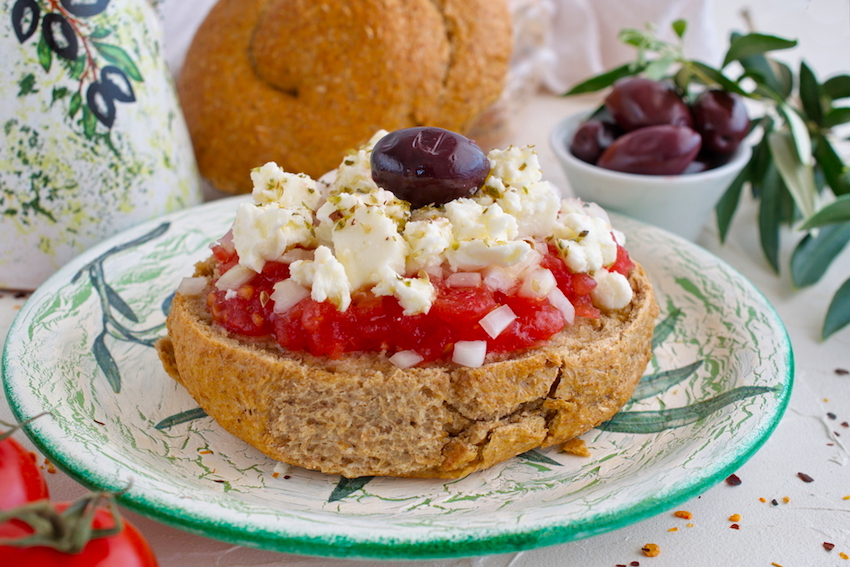
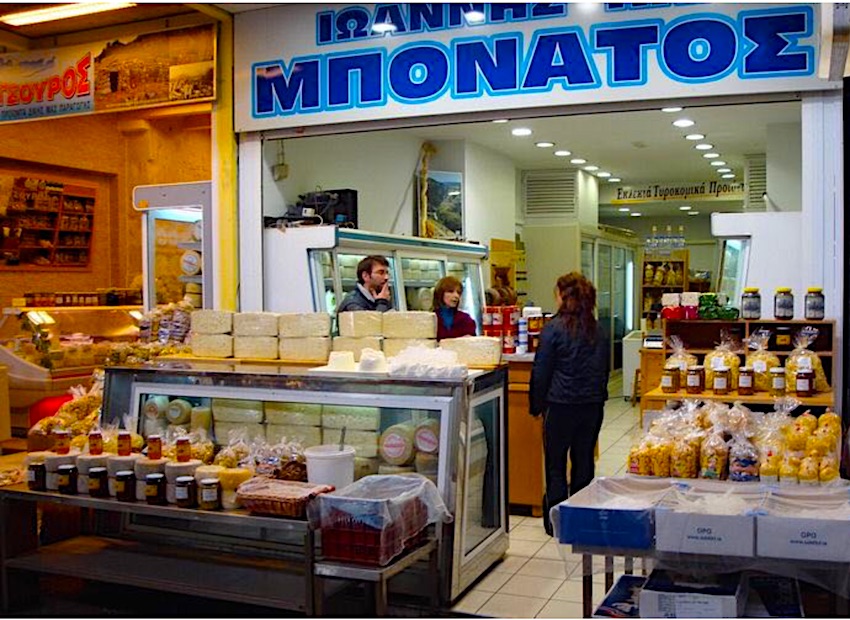
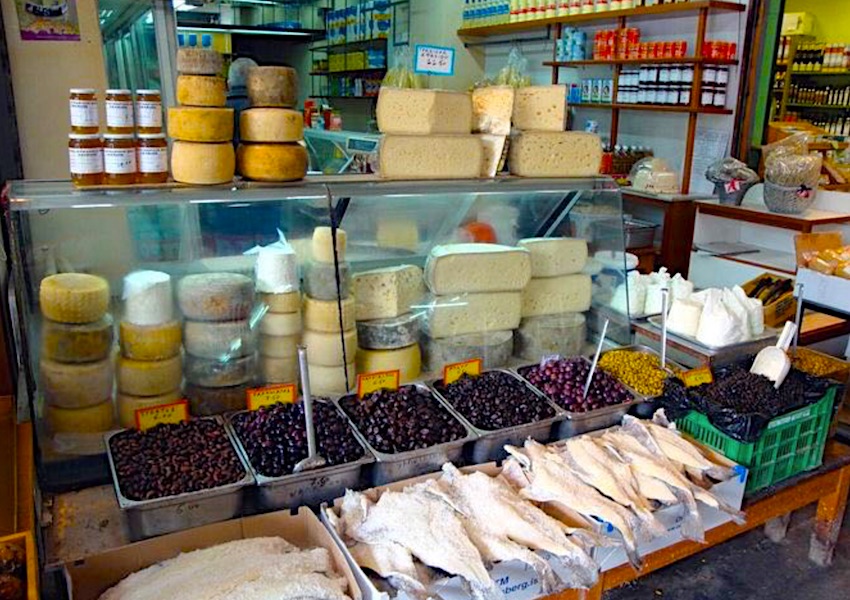
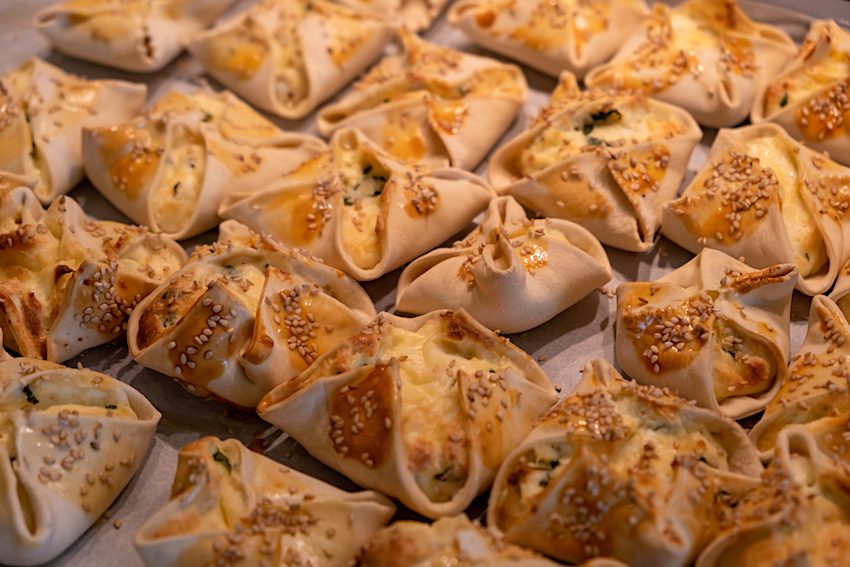
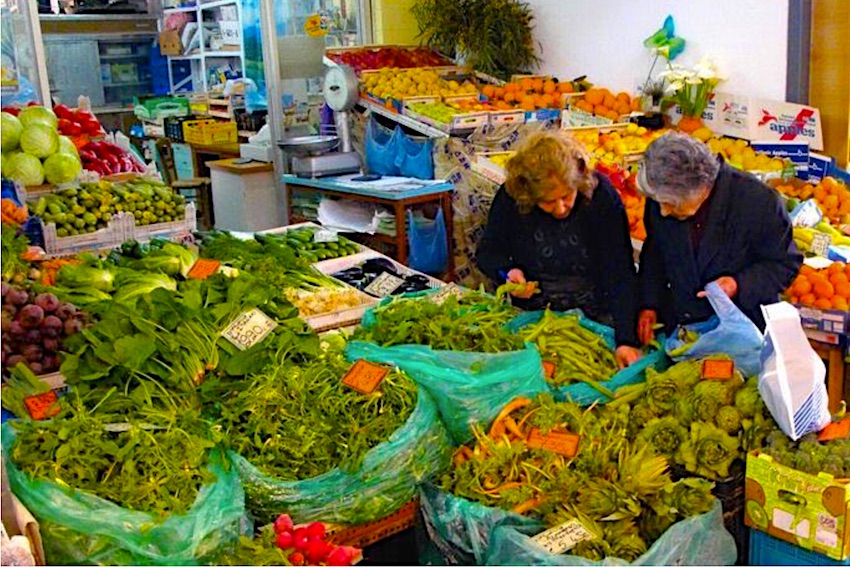
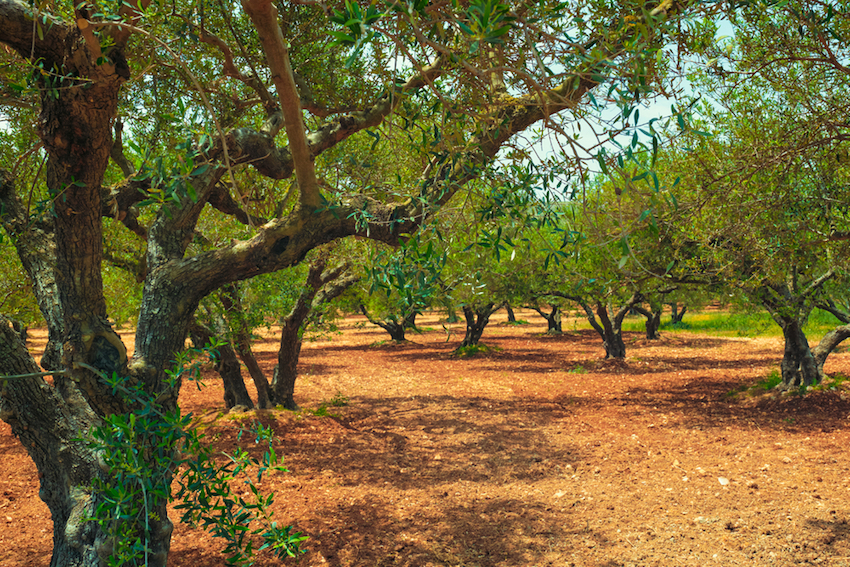
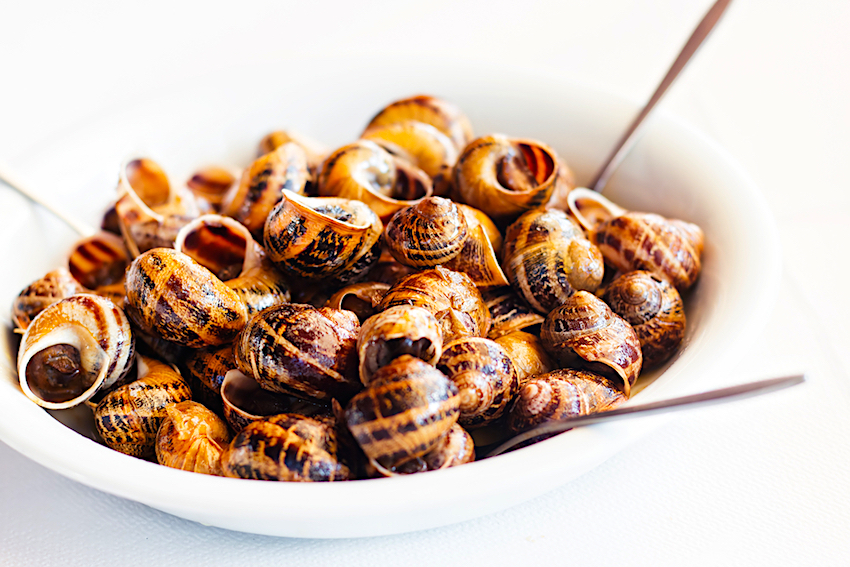

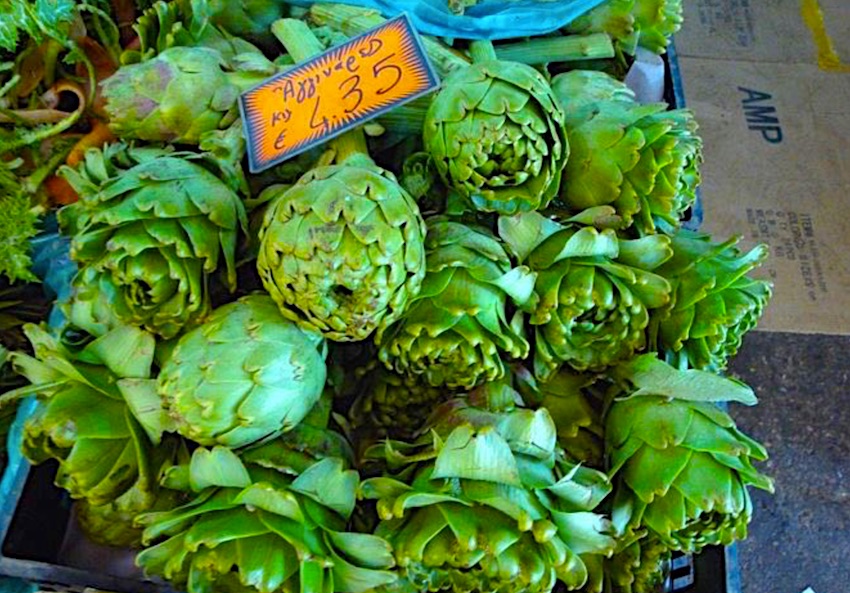
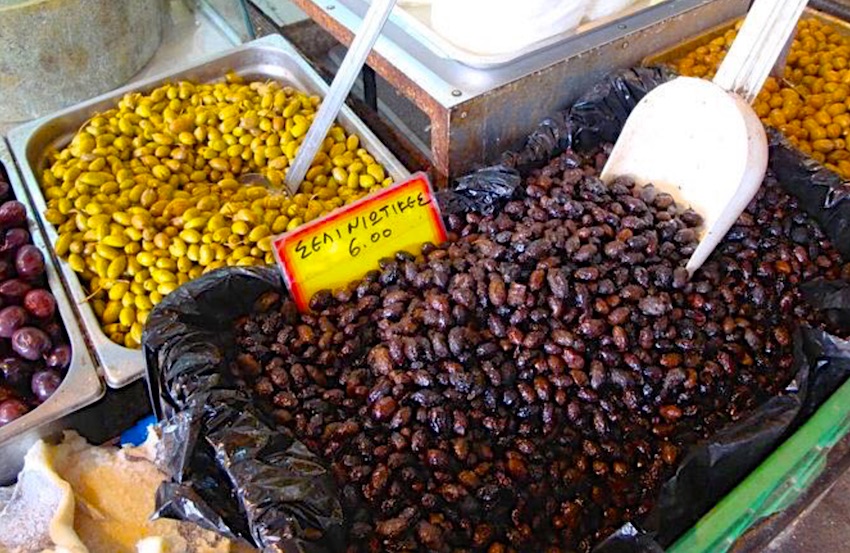
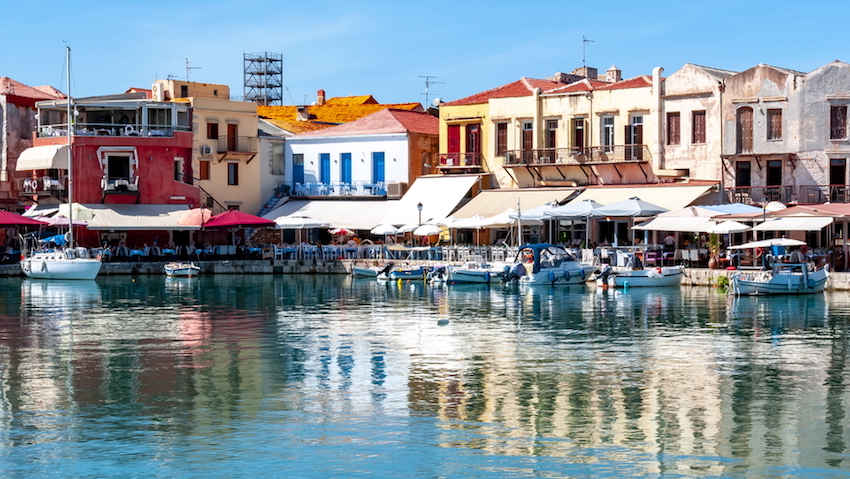
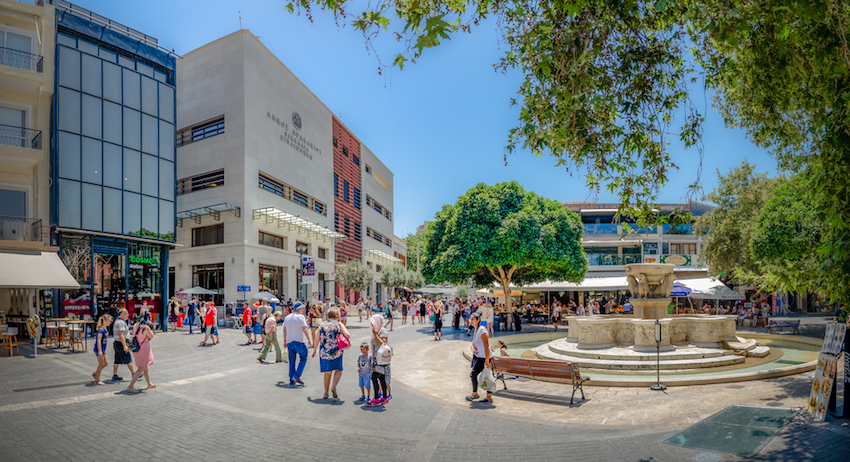
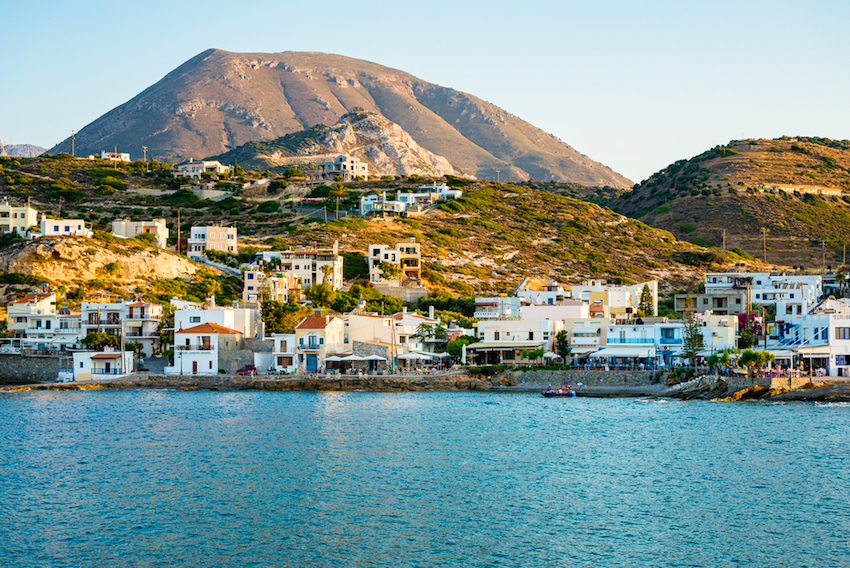
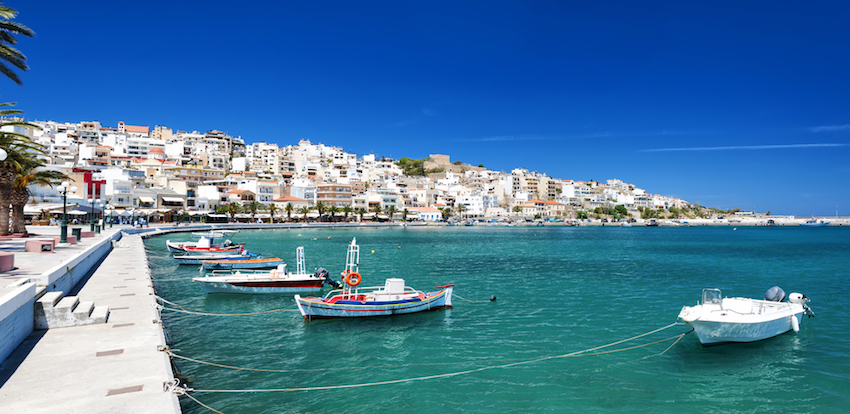
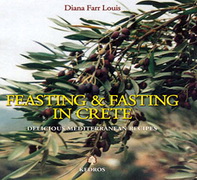 Diana Farr Louis
is an American food/travel writer and long-time resident of Greece. She
has published several articles and two books on Greek cooking – namely Prospero’s Kitchen, Mediterranean Cooking of the Ionian Islands from Corfu to Kythera, and Feasting and Fasting in Crete. She has been contributing travel pieces for the weekly Athens News since 1997 and has written two excellent travel books, Athens and Beyond: 30 Day Trips & Weekends and Travels In Northern Greece, both highly recommended reading for those whose traveling in Greece goes beyond Mykonos
and Santorini. Feasting and Fasting in Crete
includes recipes and anecdotes, history and tradition about the island
and is an essential ingredient in any Greek or Grecophile Kitchen. Her travel books can be found through Google
Diana Farr Louis
is an American food/travel writer and long-time resident of Greece. She
has published several articles and two books on Greek cooking – namely Prospero’s Kitchen, Mediterranean Cooking of the Ionian Islands from Corfu to Kythera, and Feasting and Fasting in Crete. She has been contributing travel pieces for the weekly Athens News since 1997 and has written two excellent travel books, Athens and Beyond: 30 Day Trips & Weekends and Travels In Northern Greece, both highly recommended reading for those whose traveling in Greece goes beyond Mykonos
and Santorini. Feasting and Fasting in Crete
includes recipes and anecdotes, history and tradition about the island
and is an essential ingredient in any Greek or Grecophile Kitchen. Her travel books can be found through Google


